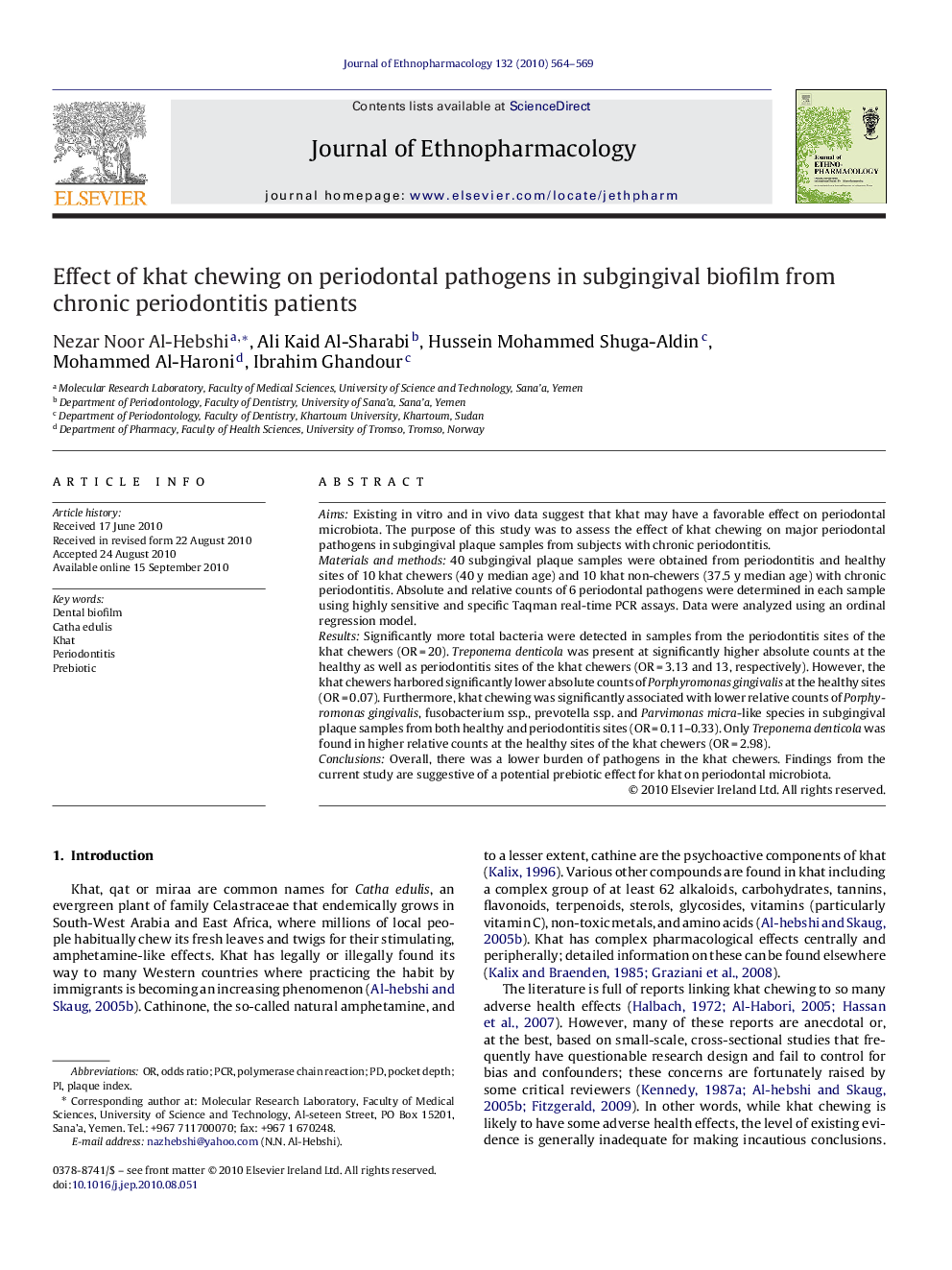| Article ID | Journal | Published Year | Pages | File Type |
|---|---|---|---|---|
| 2545757 | Journal of Ethnopharmacology | 2010 | 6 Pages |
AimsExisting in vitro and in vivo data suggest that khat may have a favorable effect on periodontal microbiota. The purpose of this study was to assess the effect of khat chewing on major periodontal pathogens in subgingival plaque samples from subjects with chronic periodontitis.Materials and methods40 subgingival plaque samples were obtained from periodontitis and healthy sites of 10 khat chewers (40 y median age) and 10 khat non-chewers (37.5 y median age) with chronic periodontitis. Absolute and relative counts of 6 periodontal pathogens were determined in each sample using highly sensitive and specific Taqman real-time PCR assays. Data were analyzed using an ordinal regression model.ResultsSignificantly more total bacteria were detected in samples from the periodontitis sites of the khat chewers (OR = 20). Treponema denticola was present at significantly higher absolute counts at the healthy as well as periodontitis sites of the khat chewers (OR = 3.13 and 13, respectively). However, the khat chewers harbored significantly lower absolute counts of Porphyromonas gingivalis at the healthy sites (OR = 0.07). Furthermore, khat chewing was significantly associated with lower relative counts of Porphyromonas gingivalis, fusobacterium ssp., prevotella ssp. and Parvimonas micra-like species in subgingival plaque samples from both healthy and periodontitis sites (OR = 0.11–0.33). Only Treponema denticola was found in higher relative counts at the healthy sites of the khat chewers (OR = 2.98).ConclusionsOverall, there was a lower burden of pathogens in the khat chewers. Findings from the current study are suggestive of a potential prebiotic effect for khat on periodontal microbiota.
Graphical abstractFigure optionsDownload full-size imageDownload as PowerPoint slide
